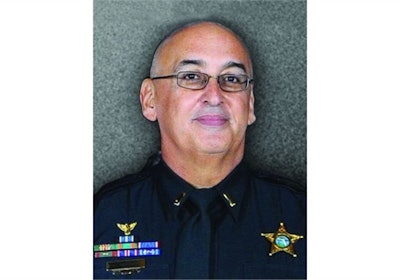
It might be cliché, but it's true that you are either part of the problem or part of the solution. Being part of the solution means bringing something to the table instead of just complaining about it. If you want change then you have to become a change agent and act as your own idea's advocate. In short, any problem you want fixed starts and ends with you.
You can approach pitching your project in one of two ways; you can present a complete proposal or submit a concept memo. Based on my past successes and failures, I feel that submitting an unsolicited proposal is not the way to go. A well thought-out proposal may take you weeks to figure out. Why put in all that work without knowing in advance that it will be accepted? Instead, I recommend writing a concept memo outlining your proposal for consideration. It's a way of working smarter and not harder.
Over the years this method has saved me a lot of time and energy. If the command staff is going to shoot you down, it will be in the beginning and all you will have invested is enough time to complete a memo no longer than two pages. A one-page memo is ideal as it has more of a chance of being read. You have to capture the reader's attention right away or the person will never even get to your main points. It's an unwritten rule that if you can't condense your presentation into less than two pages of written text, you'll be perceived as not having a grasp of the issue at hand. Support for your idea starts when you get decision-makers on your side by being brief and to the point. A longer discussion will follow if they turn out to be interested.
The first step to your success is identifying and explaining the issue you are trying to resolve. You must show that you have a clear understanding of all the layers, dynamics, and procedures. Many issues seem to have a quick fix but in reality involve a higher level of complexity. Therefore, you must do your homework and take a global view of your solution. Just asking your agency to throw money at something (asking for the latest toy or upgrade) or worse, only highlighting what is convenient to your cause, will never fly. If you only address the surface issues and fail to look at everything your issue touches, you will fail miserably.
Your next task is to present your concept in a way that convinces the command staff it will solve the issue you presented. It's easier said than done. You must create a strategy and program plan. These two items are at the heart of your concept memo and will become the centerpiece of your full proposal later on, should the idea be accepted. You must also make sure that your solution is tailored to your agency's current situation. Be careful with your assumptions; don't include future events (like grants) that you don't already have as part of your concept. You must further show who would carry out the program plan and why they should by explaining their qualifications to do so.
As you explain your concept, include any evidence of past successes. If it is a new innovation, explain why you feel it will work. Using analogies to similar programs will be of great help. There is nothing wrong with explaining how you are combining elements of several programs into one program for your use. No one said you had to reinvent the wheel. Once you have explained the highlights of your idea, you should always end by stating, "I would like to discuss the merits of submitting a full proposal at your convenience. I will go no further with this project until I receive guidance to that effect from you." If they say no, you file your memo, update it as needed, and resubmit in six months. If they say yes, you go full on with your proposal. Since they liked the concept, you have a good chance your proposal will be taken seriously and given a good review.
I used the same format for getting my agency's motor unit approved to carry short-barreled M4 rifles in their motorcycle saddlebags. I outlined the need for a better response to active shooters at schools (since they were already in the areas working traffic), how motorcycles can go places cars can't, and used our own agency's past history to show that our motor officers were first on the scene for multiple critical incidents (including a bank robbery/hostage situation and several shootings) and could have been more effective had they had rifles. Our command staff liked my concept, asked for a proposal, and approved it when I showed them how we could do it for half the standard cost. To date, we are one of the few motor units to carry rifles in the state of Florida. Doing it this way really saved me a lot of time and grief.
Amaury Murgado is a special operations lieutenant with the Osceola County (Fla.) Sheriff's Office and a retired master sergeant from the Army Reserve.

















